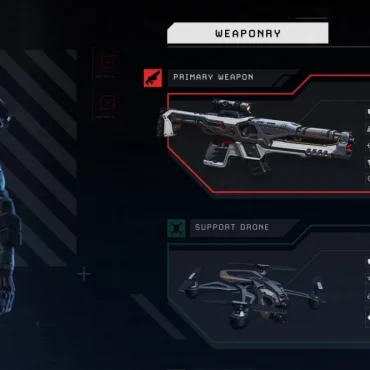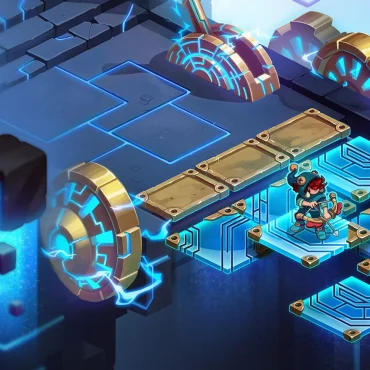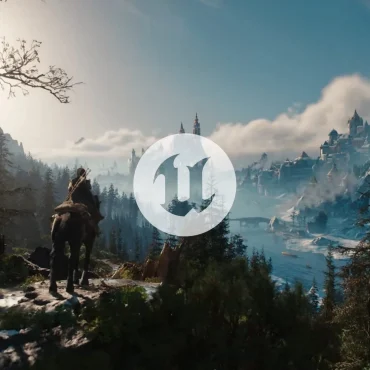Immersive technologies are now used in various fields, including entertainment, education, healthcare, and training. Designed to enhance and extend the user’s perception of reality, these technologies immerse the user in a digital or artificial environment, creating a sense of presence and interaction. This include Virtual Reality (VR), Augmented Reality (AR), Mixed Reality (MR) and some other forms.
At the start of 2020, the global work landscape underwent a seismic transformation as a response to the COVID-19 pandemic. This shift saw the rise of remote and hybrid work models, prompting enterprises to seek ways to enrich the remote work experience. And now, there’s a buzz about a game-changing idea for the future of work: the Metaverse in virtual reality, backed by Mark Zuckerberg and Meta. The other huge thing is how immersive technology can help transform the workplace in terms of training, simulations and enhanced learning. Let’s dig into why immersive technology is so big deal for modern workplaces.
Could immersive technology change how we work?
While the adoption of immersive technology in the workplace is still evolving, its potential to reshape how we work and collaborate is increasingly recognized by businesses across different industries. So how are companies using immersive VR technology today, and why is it exciting? Well, VR setups have great potential for employee training and work. Big companies are already using various enterprise VR & MR training solutions:
- Nestlé has taken a step into the future with its VR training program at the Nescafé factory in Girona, northern Spain. The goal? To ensure the safety of its employees by imparting crucial instructions and traffic rules across the company’s expansive premises. This VR training is designed to make employees acutely aware of potential danger zones and equip them to steer clear of accidents, especially in areas where forklifts and electric pallet trucks are in operation.
- Over at UPS, they’re also harnessing the power of VR for training, but with a different twist. Their driver training program uses VR to allow students to practice their driving skills and develop their ability to identify and handle road hazards, all within a simulated environment. This immersive training not only enhances driving skills but also helps drivers become more adept at reacting to potential dangers they may encounter on the road.
- Boeing is soaring high with its VR application, which focuses on assessing worker movements in their assembly lines. The aim is to identify ergonomic issues that could lead to injuries. By employing VR to address these concerns, Boeing improves worker safety and reduces downtime related to injuries. This innovative approach ensures that employees can work comfortably and safely, making the workplace more efficient and secure.
These VR training programs aren’t just informative; they’re fun, too. Employees like doing them again and again. Here’s what modern enterprise VR and MR training setups bring to the table for modern work and training:
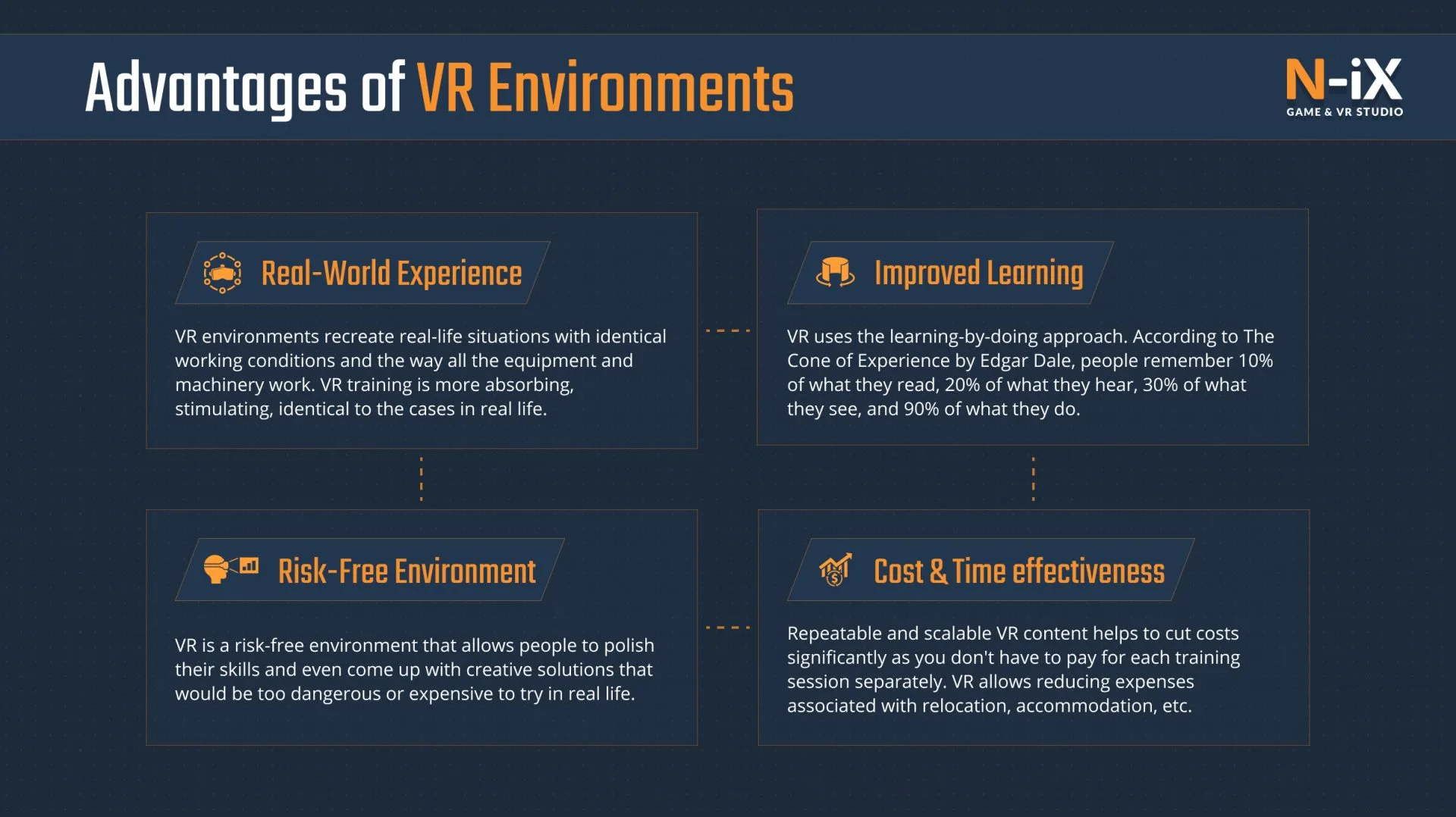
The whole point of an immersive environment is to create a space for distance learning and practicing various skills of employees, which is extremely useful for many industries. Let’s take a closer look at how virtual reality and enterprise MR training are making a splash in specific fields, with some real-life examples from N-iX Game & VR Studio’s hands-on experience.
VR & MR for employee training
Training employees is usually costly, time-consuming, and sometimes risky, especially in industries like construction, healthcare, oil & gas, or energy. Imagine having to teach someone how to handle expensive and dangerous equipment. Any slip-up could be financially disastrous or even life-threatening.
Plus, some scenarios are nearly impossible to replicate in real life. Take, for example, training people to safely rescue someone from a gas-filled pit. You’d need a whole setup, replicas of equipment, and a group of trainees. But what if you have hundreds of employees scattered across the country? The expenses for relocation, accommodation, and instructors would be staggering.
Thankfully, today, there’s a much smarter way to train employees – enterprise MR training, which combines aspects of both virtual reality and augmented reality to create immersive and interactive training scenarios. It’s like teaching someone to swim without getting them wet. Hundreds of employees can train at the same time, even if they’re miles apart, without any real-world risks.
By leveraging the capabilities of MR training, businesses can provide more efficient training experiences for their employees, ultimately contributing to the performance, and operational outcomes.
Our experience: PIXO VR – gas expert VR training
One of our clients, PIXO VR, is on a mission to change the way we work and train by promoting Virtual, Augmented, and Mixed Reality solutions (together known as Extended Reality or XR). They offer effective and secure ways to distribute and manage XR content on a global scale.
For our collaboration, N-iX Game & VR Studio was tasked with creating fully immersive and interactive 3D workspaces for Inside/Outside Gas Meter Inspection, Appliance Inspection, and Facility Locating & Marking VR training modules. It was a comprehensive project involving game design, 3D modeling, programming, and quality assurance. The training simulations were developed in partnership with Subject Matter Experts (SMEs) from the Gas Technology Institute (GTI), making PIXO VR training a credible and effective tool for industry trainees and experts.
With PIXO VR, all you need to do is put on a VR headset, grab the controllers, and you’re in the virtual reality metaverse, ready to do your job. Trainees inspect various appliances, like heating units, gas meters, ovens, and more. They identify issues, document processes, solve problems, and report their findings. Just like in real life, some virtually simulated situations are risky and even life-threatening. Trainees must use their critical thinking and decision-making skills to pass.
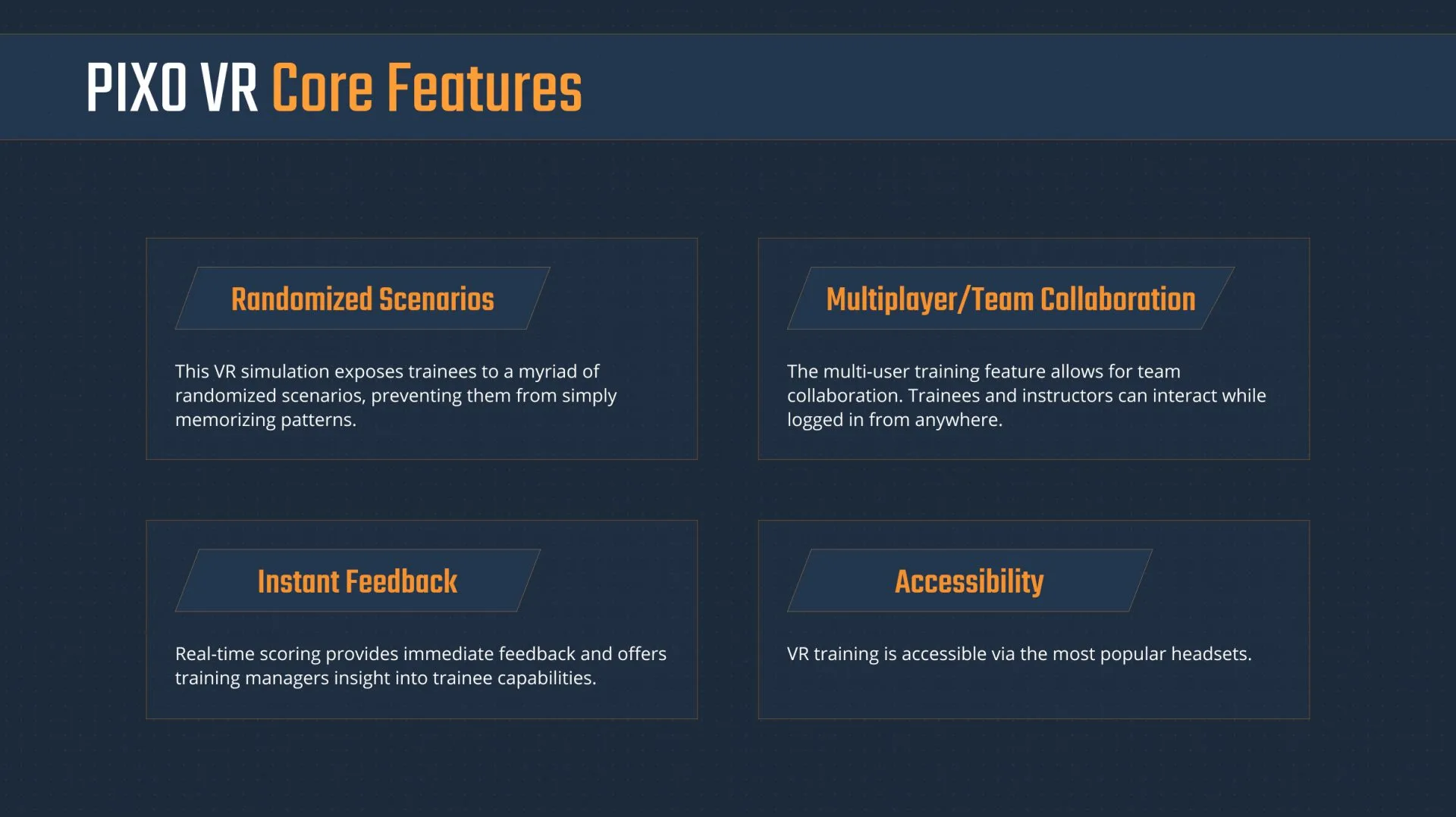
Immersive technology in manufacturing
VR experiences are becoming integral to various stages of manufacturing:
- Design & Prototyping: VR can showcase how a product will look without creating a physical prototype. Ford Motors, for instance, uses Ford Immersive Vehicle Environment tech to create virtual car models with incredible detail, allowing engineers to experience what it’s like inside the vehicle.
- Inventory Management: XR technology, like VR and AR, simplifies inventory management. A worker equipped with an iPad or wearing a VR headset can instantly locate a specific item and be guided to its precise spot in the warehouse.
- Accident Prevention: By simulating the production environment in VR, manufacturing companies can identify potential risks and address them before they become real problems.
There are countless ways to incorporate XR technology into manufacturing, bringing benefits like quicker time-to-market, cost savings, improved employee training, and more. It’s an exciting leap forward for the industry.
Our experience: Vector Suite 3D design solution
Vector Suite is a VR solution tailored for both creative and industrial 3D designers, developed by our UK partners, Goggle Collective. N-iX Game & VR Studio is collaborating with their team to fine-tune various aspects of the existing product and introduce some exciting new modules. These additions include a design review mode, voice messaging, a UI upgrade, and more.
How it all works: you’ve got a VR headset on, controllers in hand, and you’re about to dive into the Vector Suite app. Here, artists can import various elements like the engine, radiator position, or vision lines, and seamlessly start sketching car designs right on top of them, all within a VR environment. Designers have the ability to instantly transform their sketches into 3D models and switch between 2D and 3D views, saving a significant amount of time.
The beauty of Vector Suite lies in its accessibility. Designers can jump right in without the need to learn complex technical processes. After just 10-15 minutes of interacting with the software, designers find themselves at ease, fully embracing its capabilities.
Now, here’s where it gets really exciting. Goggle Collective has partnered with none other than McLaren, a renowned name in the automotive industry. Mark Roberts, McLaren Automotive’s Head of Design Operations, is beyond thrilled about this technology. While McLaren had already integrated VR into their workflow, this software takes things to a whole new level. The Vector Suite VR solution offers three substantial benefits that revolutionize the modern manufacturing process:
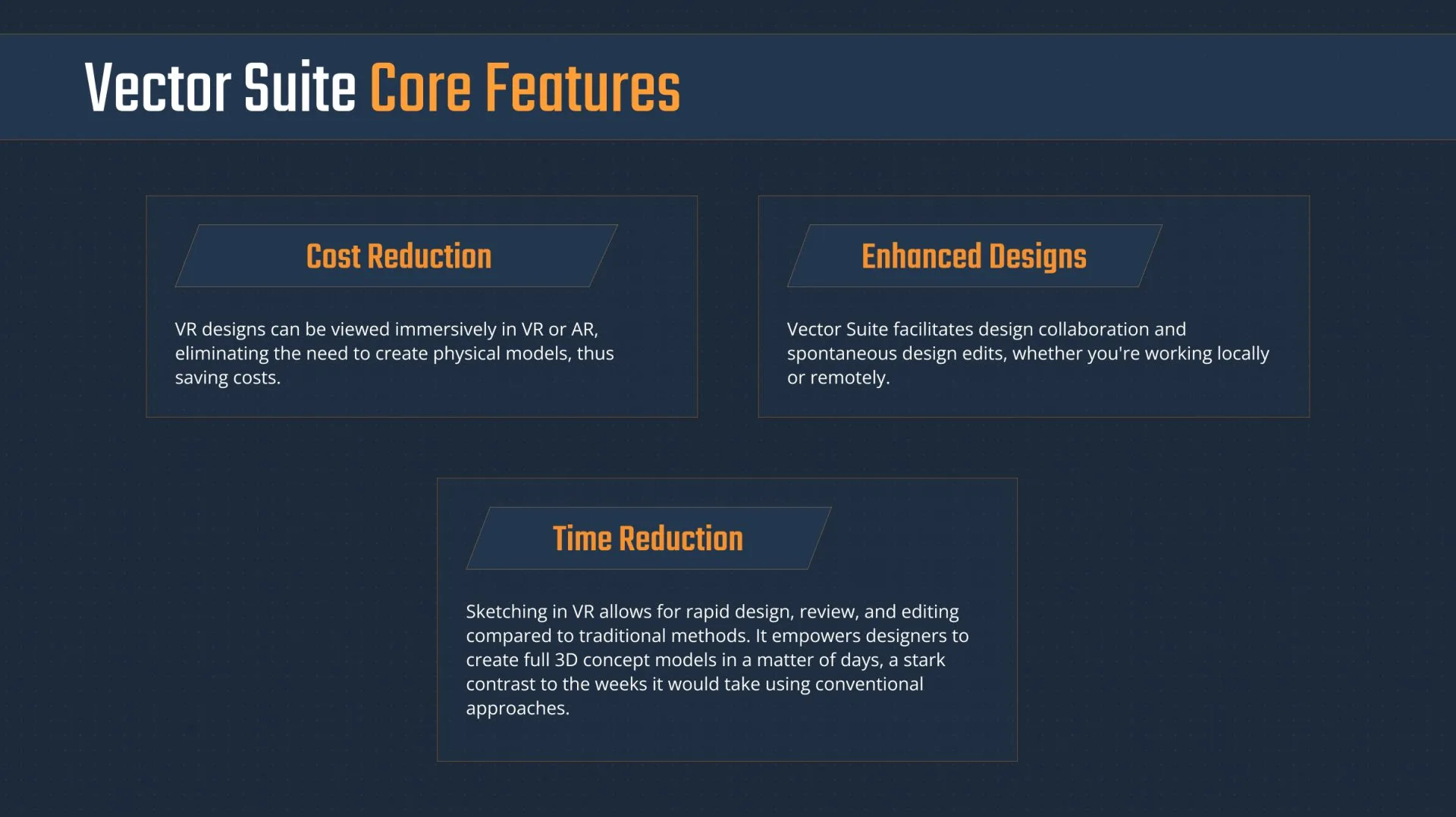
Our experience: C4X Discovery – healthcare VR application
Meet C4X, a forward-thinking pharmaceutical company hailing from Manchester. They’ve taken an innovative approach by leveraging a virtual environment to pioneer groundbreaking medicines. Their brainchild, 4Sight, is a VR visualizer that provides a unique perspective on the effectiveness of known compounds, streamlining the drug development process.
Conventional methods of visualizing molecules, like the ball-and-stick model, depict molecules as static objects, while, in reality, they’re in constant motion. 4Sight employs Unreal Engine 4 technology and its real-time rendering system to create a dynamic and precise visual representation of compounds. This virtual realm empowers chemists to observe, mix, and experiment with new molecule compounds.
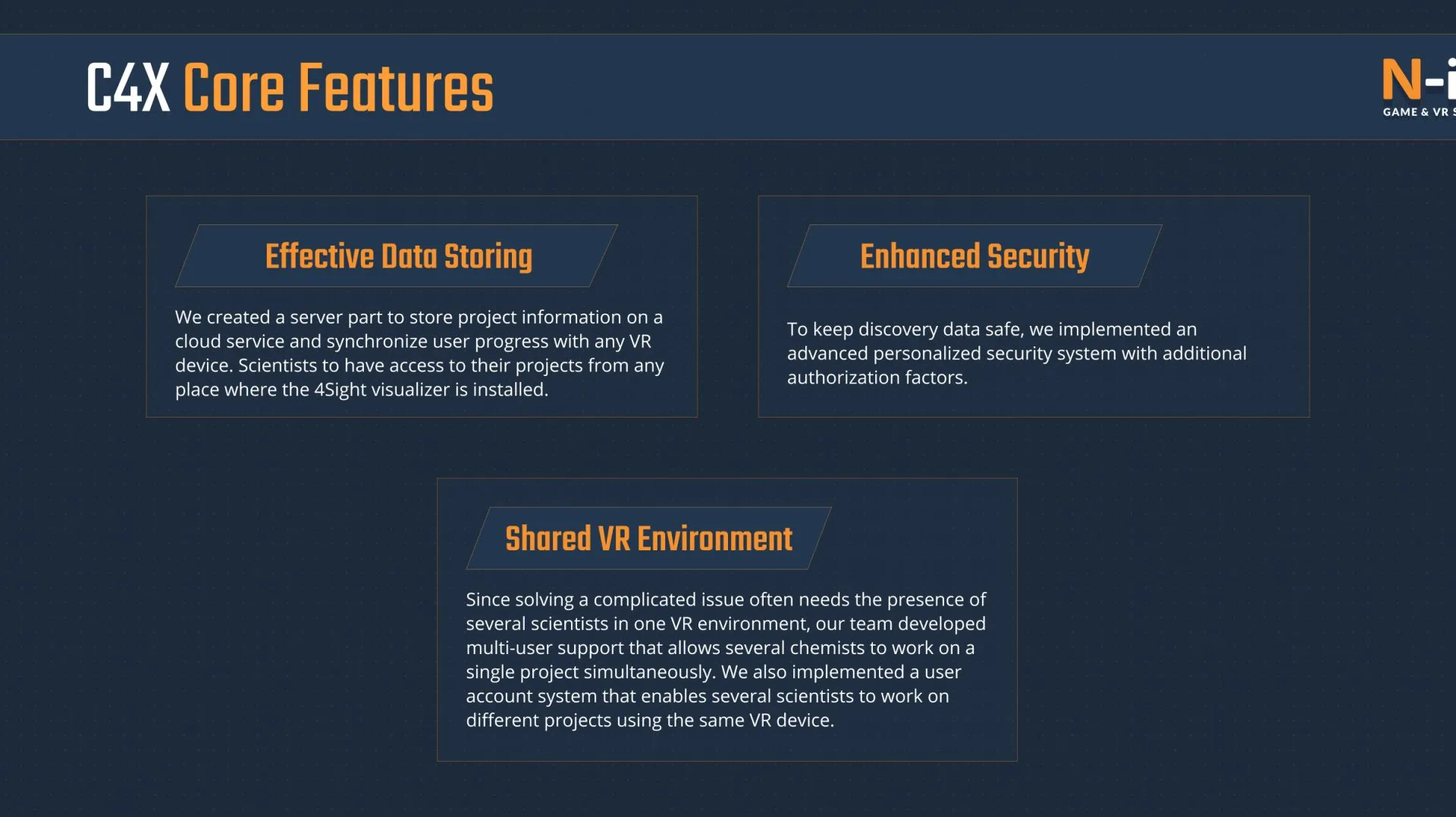
But here’s the real game-changer: this VR visualizer not only revolutionizes the process of designing pharmaceutical compounds but also fosters collaboration among scientists, whether they’re in the same office or on opposite sides of the globe. Take a look for yourself:
Sports training in VR environment
VR environments offer a risk-free haven for sports training, and one prime example is training quarterbacks in American Football—a position that carries significant risks. Developing QB talent demands substantial investments, the full engagement of a team, and, alarmingly, a 40% risk of injury. Injured quarterbacks don’t just compromise teams; they also cost millions of dollars and dashed championship dreams.
Our experience: QBSIM – quarterback VR simulator
In 2019, we partnered with Ted Sundquist, former GM of the Denver Broncos and CEO of SportsVTS. With his background as a former Air Force pilot, he drew inspiration from aviation training and envisioned training quarterbacks in a similar fashion—through a virtual environment. That’s where N-iX came into play, collaborating with SportsVTS to develop a VR simulator for quarterbacks, known as QBSIM. Our team assembled specialists proficient in 3D modeling, animation, Unreal Engine, Oculus, and motion capture to bring this vision to life.
Our mission was clear: create an incredibly realistic virtual experience. We crafted lifelike models based on full-body 3D scans, faithfully replicated life-sized stadiums of college and professional teams, and integrated AI fueled by over a decade of game data and statistics. Not to mention, we implemented a precise ball trajectory tracking and catching system using motion capture technology.
For users, the experience is nothing short of astounding: you don your VR headset, and you’re face to face with a cone sporting a football on top. The virtual ball sits exactly where its real-world counterpart would be. You pick it up and, when ready, hurl it for a pass before the defense closes in. It’s a vivid and immersive experience, with quarterback feedback and gameplay that truly stands out.
This VR training ecosystem accommodates up to 21 players on the field, where they can hone their passing techniques, master scheme recognition, develop pocket presence, enhance decision-making skills, and more. Furthermore, the system generates valuable data for recruiting, performance assessment, and return-to-play protocols.
See the results in action:
Wrapping up
These examples only scratch the surface of how VR/MR training and immersive technology are reshaping workplaces. If you’re eager to explore how our VR development services can elevate your business, don’t hesitate to get in touch with our experts. Immersive technology is an ever-expanding universe, with endless possibilities for innovation!

